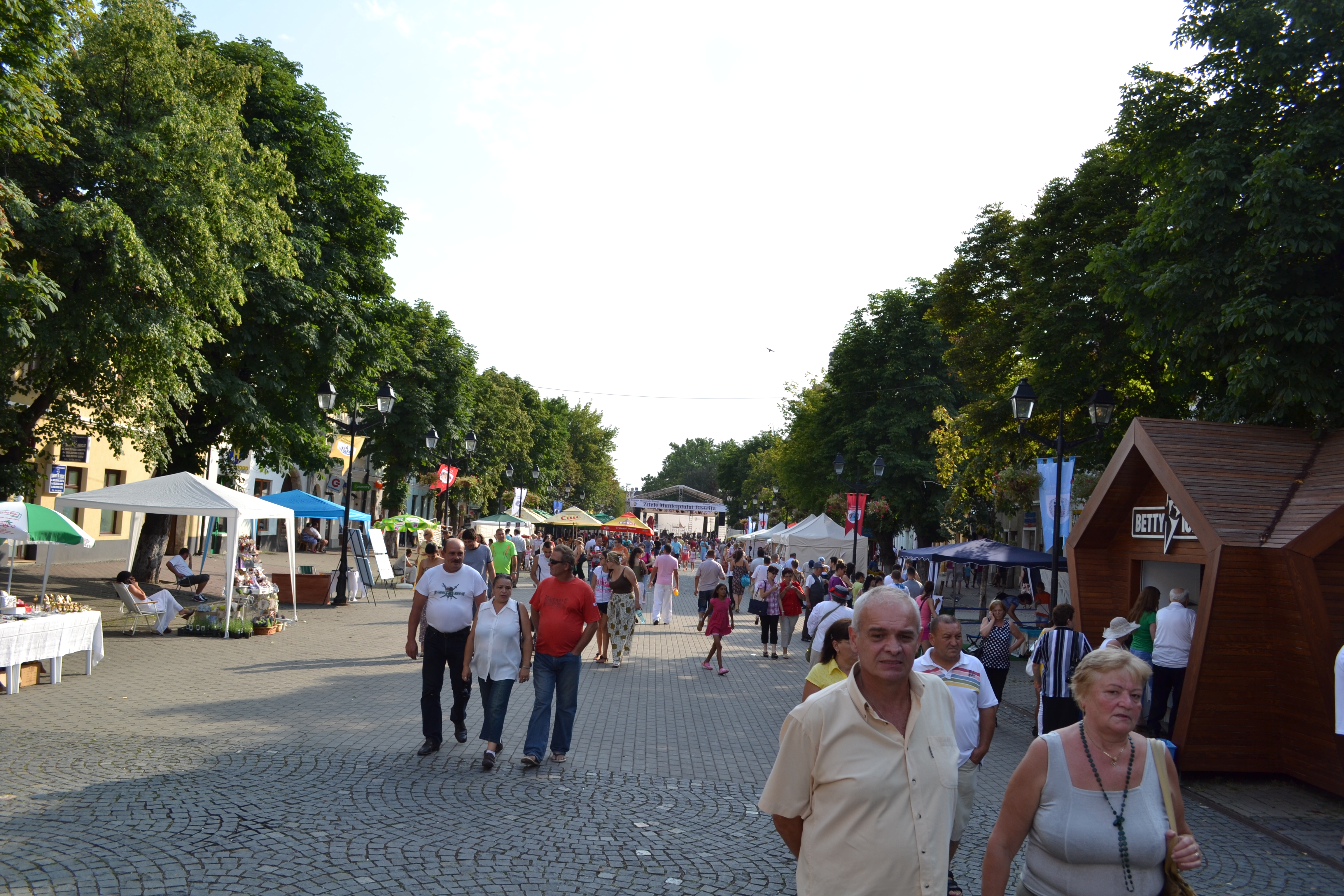Bistrita develops a study
Edited on
13 December 2016Adapting cities' retail offer to the needs and expectations of its citizens is one of the goals of the RetaiLink project. Therefore, qualitative research is a powerful and useful tool to identify the main challenges to be addressed. Our Romanian partner, Bistriţa, presents the results of a study directed by the sociologist Dora Baba, about revitalisation of the economy in their historical centre. Interview by Mihai Rusti.
- What premises lead to making a study on the revitalization of the economy in the historical centre of Bistriţa?
The study was undertaken in February 2016 and was made as an initial research of the issue, being realized in 39 companies (that were at least 1 year on the market) and 500 youngsters and adults, with the aim to:
- identify the consumers profile in the area
- determine the consumption/buying behaviour
- underline the consumption needs (products, services and events) in the historical centre
- analyze the opportunity to capitalize the local resources in the commercial activity of the area
- emphasize the promotion methods of goods and services
- identify the support/facility schemes from the local authorities to companies
- identify economy revitalization solutions for the central area
It initiated from the point where the local stakeholders of the commercial central area, both as retailers and as consumers are an important factor and therefore mandatory to be involved in a process (and not an easy one) of revitalization of the retail in the historical centre of the city, whereas the main shopping area has relocated from the centre to the outskirts of the city, especially in supermarkets and malls or to convenience stores.
The results of the study must be seen as an initial analysis stage, offering in the same time important information for future similar research, with statistical representativeness for the city, as well as a starting point to initiate other suitable tools for deepen research methods.
- What are the expectations of the retailers in the area?
The expectations and requests of the retailers towards the local public authorities, with regards to the revitalization of the economy in the city centre, (though reluctantly and with shyness) were:
- ensuring parking spots around the shops and restaurants
- facilitating the traffic flow, ensuring the optimal level of civility (eliminating the beggars and keeping the tidiness of the area)
- organizing quality events
- raising the tourists number
- placing local markets with similar products in other areas
- some fiscal facilities in connection with rent and taxes on the buildings located in the city centre

- What are the expectations of the citizens regarding the activity/commercial offer in the area?
The most wanted products named by the respondents are: crafting products (including hand made), traditional products (especially food), quality clothing and shoes (brands), gifts, souvenirs, books, musical instruments, IT products. A special thing regarding their preferences is represented by the local and traditional products, especially food (were suggested the bio and organic products: fruits, juice – apple, tomatoes, jams, cookies, sponge cake, gingerbread, homemade pies, honey and derivates, milk and cheese, local beer, wine, plum brandy, Transylvanian/traditional/homemade food, as well as crafting products, traditional clothing, decorations (including small pieces of furniture, carpets), hats and jewellery.
As permanent activities that are wanted in the central area we noticed: cultural activities (concerts, shows, and theatre), educational activities (shows, movies – open air projections and cinema - contests, youth activities), educational and leisure activities for children, fairs, markets and parades (including fashion). In the same note, are expected some cultural events of big size and quality, concerts, festivals, educational events, sports, for community and charity, great fairs and markets.
If they were to become entrepreneurs, their activity in the city centre would be: coffee shops/restaurants/clubs, pastry and cafeterias as well as franchise brand restaurants, local traditional products shops.

The main solutions proposed for the increase of economic activities in the city centre are:
- modernization of the space (architectural, conceptual, identity – fructification of an unitary concept that will join together the elements of tradition and history with the actual/modern ones, materialized in technology and state of the art brands)
- organizing some important events
- raising the level of civility and activation/implication and animation of consumers.
It is considered that tourists - an important segment in raising the economy level of the historical city centre – can be attracted through a better promotion, organizing big events (concerts / festivals / fairs) and highlighting / capitalization of local traditional elements.
It is interesting to see that at citizen level, as potential clients of this area’ shops, it is registered a high level of optimism concerning the revitalization of the retail in the historical centre.
This study showed the real problems that are faced, but also some solutions to overcome them. It is obvious that this ambitious step can’t have the foreseen results unless we create a real and honest partnership between the local administration and the companies to raise the awareness of the partner’s common interest. The following steps will show and develop the action to be undertaken by each stakeholder and the good practices and solutions found by communities that are in similar situations represent good and inspirational examples.
 Submitted by Anna Suarez on
Submitted by Anna Suarez on
